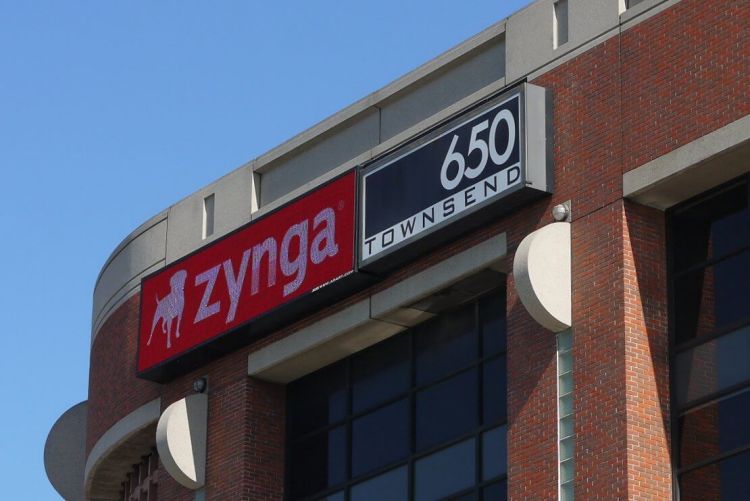testsetset
When Zynga sold its San Francisco headquarters for $600 million in May, the social mobile game company received a lot of fresh gunpower for acquisitions.
The man who is happy about that is Chris Petrovic, senior vice president and head of corporate strategy at Zynga. The company has spent a lot of money on acquisitions recently. It bought 80% of Small Giant Games for $560 million. It acquired Gram Games for $250 million. It bought most of Peak Games for $100 million. And years ago, it bought NaturalMotion for $527 million. All of that activity burned up a lot of the money that Zynga had from its initial public offering in 2011.
But with fresh money in its coffers, Petrovic can think about what makes sense for Zynga to do next. Petrovic gave a talk at the recent GameDaily Connect event in Anaheim, California. I spoke with him afterward.
Here’s an edited transcript of our interview.
June 5th: The AI Audit in NYC
Join us next week in NYC to engage with top executive leaders, delving into strategies for auditing AI models to ensure fairness, optimal performance, and ethical compliance across diverse organizations. Secure your attendance for this exclusive invite-only event.
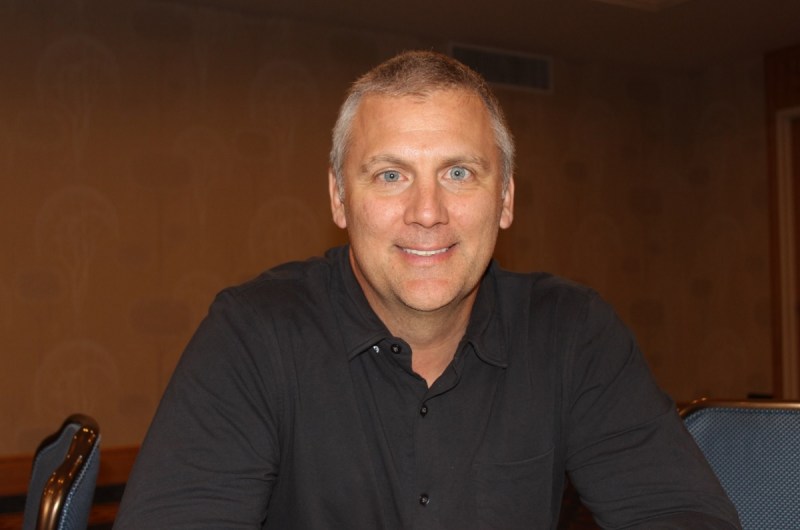
Above: Chris Petrovic is senior vice president and head of corporate strategy at Zynga.
GamesBeat: What kinds of calculations go into deals where you can figure out what should be the right price to pay for an acquisition? For Zynga, and for the market in general.
Chris Petrovic: For Zynga, as much as you would think we’d start with the quantitative aspect, for us the qualitative one is equally important, if not more so. If you look at the history of our acquisitions since 2016, a lot of those have been built on cultivation of relationships. The reason that’s important because for us is because we realize that doing M&A involves not just a near-term transaction, but a long-term relationship where you have to work in harmony and cohesion with one another. Making sure that both sides feel like it’s the right fit, culturally–how do you approach game development? How do you approach live services?
GamesBeat: Culturally that makes sense, because if you buy a company, the developers can choose to walk, right?
Petrovic: That’s right. Then you’re left with something you can’t manage well, because you’re not the founders. You’re not the principals of that company. For us, creating the rule set with the acquired entity early on — once the relationship has been established, with Gram and Small Giant and even with Peak, those were 12-18 month relationship-building exercises that were first and foremost started on an appreciation of what they had built.
Then, obviously, we progressed into discussions around, how are you thinking about the future? Then hearing about some of their perceptions of challenges and opportunities in the market, and then making that triangulation around — these are problems you’re facing. Companies like us can help you solve them through X, Y, and Z. It was a relationship-building exercise, and then once you establish that foundation, you move to the next level of learning about each other’s businesses from the quantitative aspect.
We’ve talked a lot about forever franchises and being able to see games that have the ability to meet and exceed that trajectory. Obviously they don’t have to be there at the moment in time when we start talking, but there are metrics around retention, engagement, and organic install ratios, things of that nature, that really get us interested in a game. The qualitative plus the quantitative leads us to a point of making a decision on interest. From there it’s off to the races.

Above: Empires & Puzzles
GamesBeat: Is part of that to catch them early, before they have a forever franchise, but have the potential to be one?
Petrovic: For those two — those were obviously not insignificant amounts of money we spent. The message there is, yes, we’d like to get them at a point in time where we see a lot of runway, but we’re just as happy to engage with companies that are already at a massive scale, and that we feel still have the ability to benefit from an involvement from Zynga in helping their business grow and ultimately getting to that “1 + 1 = 3” calculus.
Whether they are at an earlier stage side of the forever franchise, whether they’re already on the other side and have a stable growth annuity business that’s continuing to grow — especially now with what we’ve done as far as being able to replenish the coffers through the building sale and the convery, we have the ability to look bigger. We’re giving ourselves permission to do that, because we’ve been fortunate that these previous acquisitions, one after the other, have worked out so well to date. We’re getting a lot more confident in our ability to continue to look at larger and larger scale things.
GamesBeat: Before, if you were making $100 million deals here and there, you eventually ate away at a lot of the original capital Zynga had. You might be crazier to try to use all that capital or to use a lot of debt to get something. It has to be the one in a million deal to justify that kind of behavior.
Petrovic: Yeah, to put all the eggs in one basket, that’s a pretty high threshold.
GamesBeat: As far as what you see and what you’re finding, how often are you coming across these potential deals? Do you wind up having to pass on them because they’re so plentiful?
Petrovic: The general trajectory of corporate development and M&A practice is that you’re saying no to things 98 percent of the time. To me, that’s a sign of running a good, disciplined M&A practice. When I say that, it doesn’t mean saying no at the first instance of engagement. Our proverbial office doors are always open to anyone who wants to talk to us. I think what we do well is stay disciplined to the guardrails we give ourselves about what we’re willing to consider, and that allows us to not get overly exuberant about something that we know, based on the fundamentals of that business, will ultimately have a low likelihood of working. Having that disciplined approach to managing the funnel of opportunities allows us to have a wide top of the funnel, but allows us to efficiently narrow things pretty quickly.
We’re also in a fortunate position at this stage of the market, and with Gram and Small Giant being two great examples of studios that were coming to a fork in the road of their own making, that had nothing to do with us necessarily. They were deciding whether they wanted to invest all of the profits from their existing business into building out a full-fledged game company, which includes a lot of the plumbing that companies like Zynga spent 10 years building, or whether they wanted to just keep making games and plug into somebody else.
In both cases we’re lucky that they made the latter decision. In Small Giant’s case they had this mantra of wanting to stay small and mighty. They continue to do that. They focus on what they do well and we give them access to anything and everything in our suite of services and tools that they want to use. In both cases, with both them and Gram, it’s been beneficial. We don’t make it compulsory. We let them run their business, maintain their culture, do what they need to do to run the business day to day, but in terms of being partners with them to help accelerate their growth and realize their goals — I like to think that headquarters is a support center for our studios, both existing and new.
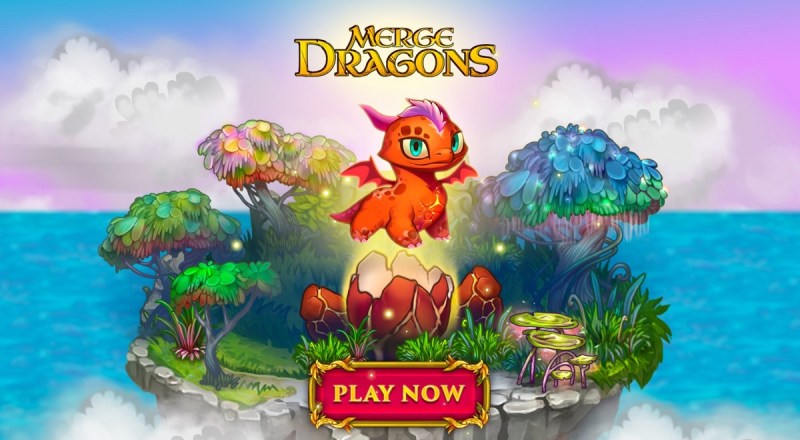
Above: Gram Games’ Merge Dragons.
GamesBeat: Do you also have fresh proof, then, that Zynga can help the companies that it acquires?
Petrovic: Some of the stuff that you’ve done on that front with both Small Giant and Gram — we’ve let them speak for it, because they’re ultimately the ones that are using our services. There have been cases where we’ve availed them of resources, either technological or human capital in nature, to address certain situations that they were considering, or issues they were having, or thoughts they had about where they wanted to go at a certain point in time. Whether it’s plugging into a technology or talking to a person or looking at data or using our negotiation acumen to help them get something across the finish line, all of these things have been utilized to varying degrees.
Again, they chose to plug in to an existing ecosystem versus building it themselves. We have a long, good history of doing that stuff for our own games. In both cases there have been many instances we’ve seen internally where that has borne fruit.
GamesBeat: As far as platforms go, do you think there’s still room for a Zynga to operate purely where it is, within mobile? Or have you given thought to going outside into PC or consoles?
Petrovic: We think a lot about the broader gaming ecosystem and what that means for Zynga on a global basis, what the total addressable market is for us. Frank has been pretty vocal in his public statements, earnings calls and otherwise, about new channels of distribution, as well as new or existing platforms for games where Zynga doesn’t currently exist. Obviously Facebook Messenger and Snapchat have been great examples of that on the “mobile” side.
We have started looking more and more at what the future looks like in a world where consumer expectation around cross-platform play is only growing. Specifically, the expectations consumers have about being able to play games across a myriad of devices, just like they do with other forms of media. We think that this is the time in the life cycle of the gaming industry where technologies are coming along at such a rate – 5G and streaming and so on – along with new entrants like Epic, and we’ll see the future potential of Stadia — game companies are no longer going to be affiliating themselves with a specific platform as their primary focus. They’ll just be game-makers that make great games. Those games have the ability to show up to consumers across a wider array of devices than before.
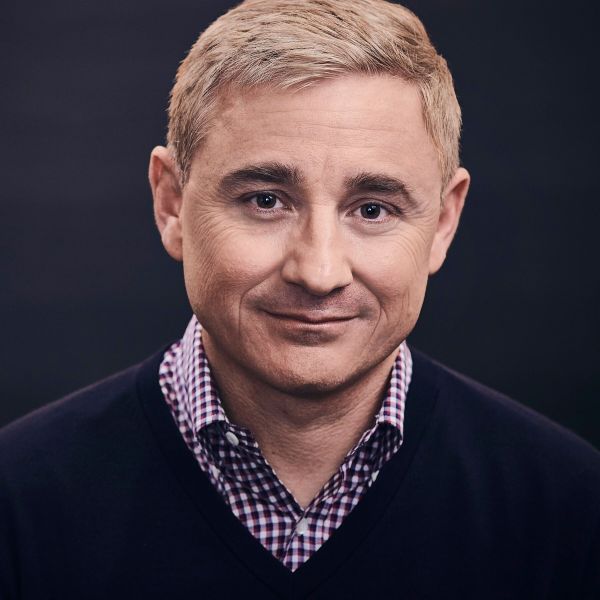
Above: Frank Gibeau, CEO of Zynga.
Zynga definitely sees itself in the mix on that. We’re spending a lot of time reconnecting ourselves to the console and PC space, to the Switch space. Management has a lot of background in that. Not necessarily Zynga as a company, but the management and leadership here has spent a lot of time in everything from retail to console and PC and other forms of development. We’re comfortable operating in those environments, and the good thing is, we know a lot of the people in that environment. I can see that being a path that Zynga continues to look at as a way of expanding our total addressable market.
GamesBeat: There was the announcement today from Sprint 5G and Hatch about free cloud gaming.
Petrovic: Well, nothing’s ever free. [laughs] I’m more excited about the Disney+ subscription rate for D23 members.
GamesBeat: Cloud is going to create all kinds of opportunities, but maybe more competition too, on the mobile devices.
Petrovic: The one thing I’m encouraged about relative to when we’ve talked about this in the past, in the first generation of cloud when it was OnLive and Gaikai and so on — I feel like it’s the right set of technology players at the table. They already have the scale of infrastructure to address the inherent challenges associated with cloud gaming around economies of scale and latency. When you have Google, Microsoft, Sony, Apple, Amazon — those are the people that control most of the infrastructure and traffic around games, the bits and bytes that are delivered around gameplay. If they can’t solve it, I don’t know who will. But they’re certainly putting their resources toward it.
GamesBeat: Is your competition, in a way, the creation of internal studios from the ground up? Do you have to see those fail before you get to do yours?
Petrovic: [laughs] I don’t think it’s a binary thing. I think we have a number of studios that we’re investing in to bring the next forever franchise to market. Obviously we have the FarmVille game in soft launch. We have the games from Gram and Small Giant. We have high hopes for those. NaturalMotion is working on a few things. It’s not so much building from the ground up as it is taking the existing studio resources as they’re cycling off existing projects and putting them on new ones. Putting that in parallel with acquiring new forever franchises and our acquisition strategy in general, I feel like that’s a good one-two punch.
Ultimately we’re judged on the ability to bring games to market as a game company. For us, investing in our people, investing in these projects, and having a rigorous process around getting those to market is super important. It’s what’s driven a lot of the value of the company since management came on in 2016. We’ve launched fewer, bigger, better games. We’ll continue to do so.
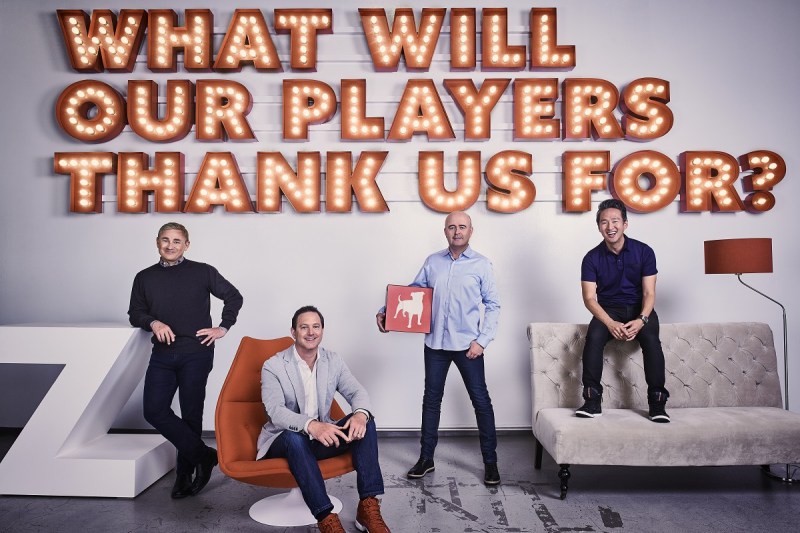
Above: Zynga execs (left to right): Frank Gibeau, Matt Bromberg, Ger Griffin, and Bernard Kim.
GamesBeat: It’s interesting how some companies like Riot can get by without ever launching new games.
Petrovic: [laughs] They’re perpetually in the works, yeah. They’re working on something. That’s the power of a franchise, though. When you have something at that level of scale, that goes back to what were some of the early tenets of the turnaround for Zynga. Reminding the company that we had all these franchises that millions of people a day were coming to. That’s hard to replicate, and getting harder. When you have a good thing, you can create just as much value, if not more, by building on top of that foundation, instead of building from scratch. Building from scratch also has high potential, if it resonates with the audience and is executed well.
That’s why something like FarmVille, which has so much brand equity, combined with a crack, top-tier team in Helsinki — there’s a lot of excitement around the potential for that. Obviously with Gram and Small Giant having demonstrated success with games and then building the next phase of their growth through these new games, there’s a lot of excitement around that, because they seem to have cracked some code. It’s hard to define what that is, except by virtue of the audiences voting with their time in those games. Doubling down on formulas that have worked and then iterating and innovating on top of those things are both super important and part of the mission of the company.
GamesBeat: You started talking a bit earlier about companies that are acquisitive or likely to acquire, and how they’re motivated by different things. I wonder what you think of the world as it is, with the M&A charts that are so dominated by Asian companies, the Chinese companies and once in a while the Israelis. What do you see as the different motivations for the acquisitions that are happening?
Petrovic: The larger these companies are, the larger swings that they can take at doing deals. There’s a stratosphere in which some of these companies exist where companies like Zynga can’t currently compete, at least when it comes to deploying that amount of capital. It doesn’t mean we can’t compete in the sphere of deals we are able to look at, and in many cases we have been fortunate enough to win out in competitive situations, presumably with strategics from Asia in the mix.
The motivations for these companies can span any of a number of things, a lot of which we’re not privy to. You can imagine that diversification, maintaining a certain level of market share, de-risking themselves from too much concentration in one location around development — any of a number of these things. For Zynga one of the pillars of the turnaround is to bring in new forever franchises through M&A. Any and all of these things could be factors for these companies. I think our peer set’s better suited to answer that on their behalf. But I can only imagine that a lot of these factors go into their thinking.

Above: Zynga Poker is introducing Spin and Win.
GamesBeat: One thing I worry about is, will all these companies wind up being Asian-owned at some point? Given the trend in acquisitions, it sounds like a world that still might not happen. The way the game industry has been, even if they acquire all these companies, people will just leave and start new ones wherever they are.
Petrovic: Especially as it related to China, before there was more regulation that came down from the Chinese government around exporting capital — you covered that extensively. It’s been about two years post on that, and we’ve seen — non-gaming companies that are publicly traded in China are not making game company acquisitions anywhere near the rate they were at one point. That was a big source of exit. It’s another thing when gaming companies like Tencent and NetEase and others are deploying capital, because it’s within the wheelhouse of what they do.
Companies around the world are going to make their own decisions about how they feel about working with a company from any geography, hopefully from a culture fit perspective, from a quality of life perspective, from an alignment of vision perspective. Those considerations, in my mind, transcend, in many cases, price.
GamesBeat: These things come back to helping you benefit during deal-making as well.
Petrovic: Again, we align so much on the qualitative aspects of what makes a deal successful. In many cases other acquirers don’t. It’s a matter of time before there are enough use cases of companies that come out of experiences that have not been positive, regardless of who the owner is. It’s happened everywhere, including at Zynga throughout its time.
M&A is a very tricky thing to manage, because what people don’t realize — it’s not dependent on the successful execution of the transaction. It’s dependent on the successful long-term working relationship. That’s where the value is created for both sides over time. That’s a much longer investment cycle.
I’m excited for the M&A activity in the market in general to continue. We’re in a prime spot to continue to execute on our vision, and hopefully we can continue to uncover the next Gram Games and the next Small Giant.
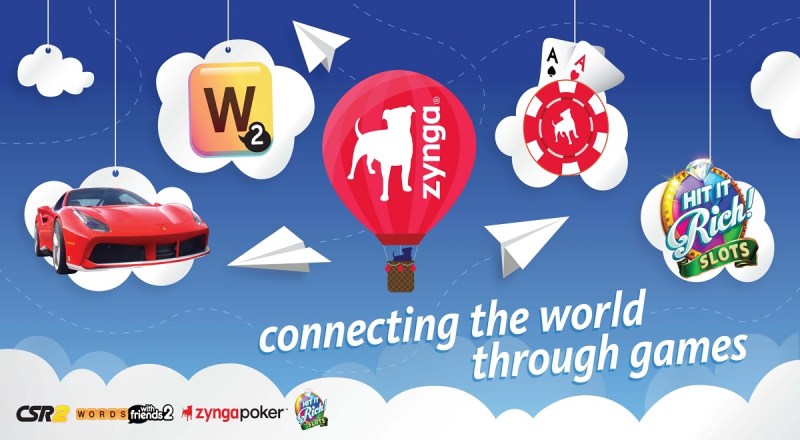
Above: Zynga had a big banner at GDC 2018.
GamesBeat: Are more game company IPOs likely?
Petrovic: It depends on what market. We had Sciplay that went out relatively successfully. It maybe gave folks here in the U.S. a bit of renewed confidence in the public markets. Between our relative performance over the last three years and Glu’s as well, that’s also done well for the western markets.
The Nordic markets have been interesting in terms of the rule sets that allow companies to go public there. That creates a lot of increased visibility for the gaming industry, regardless of how the companies perform. It adds another layer of visibility to our industry when it’s on a public market. It’s always interesting to see how Asian companies are riding the waves, which markets – western or eastern – that they like to leverage. There was momentum many years ago around Asian companies coming west, and more recently delisting and relisting back in Asia, because of the arbitrage on multiples. Now I don’t know where that is, but I’m sure the pendulum will keep swinging.
The public markets will continue to be robust, as well as the investment markets. You look at the slew of private equity money that’s starting to come in the game industry, through Blackstone and KKR. The acquisitions they’ve made — it’s interesting to see these kinds of companies coming into the mix, that historically haven’t been in there. It speaks to the maturity level of games. It’s now barkering to a wider audience of financial investors, which is super exciting.
GamesBeat: Do you think it’s unlikely that the platform companies, the biggest ones, would start buying game companies? The likes of Amazon, Google, Facebook, Apple. Microsoft got active and then it looks like it caused Sony to buy one company. Sometimes there can be a domino effect. But do you think this is unlikely, that the large platforms would do this?
Petrovic: At one point in time I would have said very unlikely, but if you look at, to your point, Microsoft and Sony, if you look at the history of Valve, which operated on the back of its own content, and the Epic Store….
GamesBeat: These are platforms we didn’t really think about as platforms. We thought of them as game companies.
Petrovic: The Apples and Googles of the world, that would be an interesting development in our category. It would cause you to have some very busy cycles, with all the feedback loops coming in around how game companies would feel about that. [laughs] It’s going to be interesting seeing that to a limited degree with the Apple subscription and how companies in that subscription fare versus ones that aren’t. That will be somewhat of a harbinger of how that kind of curated ecosystem will work.

Above: FarmVille from Zynga.
GamesBeat: Apple is moving into owning its movie and TV content. But I guess the inhibitor I saw was that both Google and Amazon have to be wary of anti-trust. For them to acquire companies in some new space — I think that was one of the original reasons why Google never followed through on buying Twitch, a certain fear of the government stepping in.
Petrovic: That’s one thing. Google obviously has Stadia working on its own content to a certain degree. Amazon, to their credit, has taken a lot of swings at buying companies, made a lot of bets on their side, although not in the direct anti-trust nature that you’re talking about. Even these platforms are doing it on the periphery. Apple has been one of the few — their periphery has been in other media verticals, to your point. It’s going to be interesting to see how that manifests itself with games.
Somehow, media and entertainment platforms have historically thought of games as a bridge too far. Even with the media companies ebbing and flowing in and out of game development. It’s entertainment content creation, but they’ve seen it as a different beast from music or TV or movies, which has been interesting. I don’t know what to ascribe that to, why it’s exponentially harder for them to do that form of entertainment versus others. To me it’s all entertainment. The only difference is you’re pressing a button that makes the action move forward.
Disclosure: The organizers of GameDaily Connect paid my way to Anaheim. Our coverage remains objective.
